Ultimate Guide: How to Generate AI Images with ChatGPT?
ChatGPT 4 was far behind the race, failing to create quality images based on user prompts. Still, it wasn't enough to stop tech enthusiasts and designers from using ChatGPT and exploring the ChatGPT image generator technique with the help of relevant prompt patterns and plugins.
Dive into the tricks and techniques associated with the ChatGPT picture generator and learn more about its features.
Part 1: Can ChatGPT Generate Images?
When prompting for solutions from ChatGPT, you may have thought, can ChatGPT generate images?
AI-generated images have significantly impacted a wide pool of industries, from healthcare to marketing.
However, OpenAI hasn't come up with any functionality for ChatGPT where it could generate an image based on user description.
The first reason being it is solely a text-based open-source solution. Moreover, it lacks features to convert text to image, and the training dataset contains fewer images compared to what most AI image generator tools are trained on.
However, using the relevant prompts, descriptions, or plugins in the case of ChatGPT 4, people have found ways to generate images with ChatGPT.
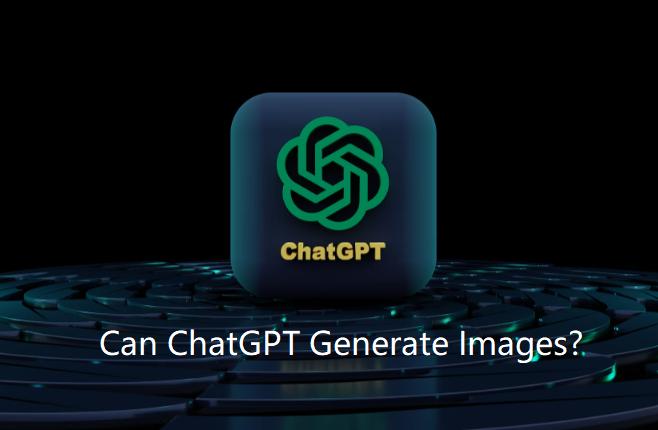
Part 2: How to Generate AI Images with ChatGPT?
Almost everyone these days requires ChatGPT assistance for routine tasks like email writing or even social media captions.
However, it's time to take a step forward, utilizing this tool as a ChatGPT image generator. Following are the two methods categorized as paid and unpaid based on your requirements:
Way 1: Use ChatGPT as a Prompt Generator (Free)
For the first method, you have to use the default GPT 3.5, which generates images within the chatbot. Follow the steps for an effective outcome:
Step 1. Go to ChatGPT 3.5 and create a new chat.
Step 2. Copy and paste the following prompt in the text section to turn GPT into a prompt-based ChatGPT image generator.
Prompt: "You are an image prompt generator. First, ask me for a description of an image, and help me fill in the following."
Step 3. Hit Enter and wait for a response. It will ask you to describe the type of image you need.
Step 4. Write the description in the message box; the more details, the better image.
Step 5. Now when you enter, ChatGPT will generate an image as an output which you can download and upload anywhere you want.
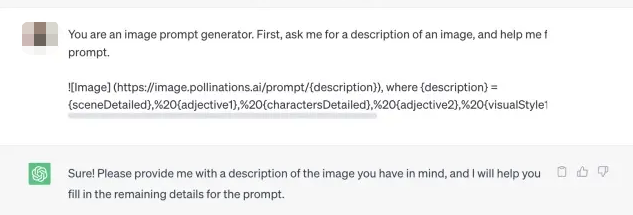
This tried and tested technique can generate any type of image you need, but the accuracy and relevancy of the image may not be up to the mark.
Way 2: Install and Use ChatGPT Plugins (Paid)
With the paid version of ChatGPT or ChatGPT 4, you have to install and use Argil AI and photorealistic plugins to create images. Here is the detailed guide to the process:
Step 1. Enable plugins in ChatGPT plus beta features.
Step 2. Go to "Plugin Store" by clicking the plugin drop-down menu.
Step 3. Search Argil and Photorealistic keywords and hit "Install" for quick installation.
Step 4. Complete the Signup process for both plugins and set it as main plugins.
Step 5. Select Argil and Photorealistic plugins, and write the following prompt in the message section.
Prompt: "Generate only one detailed prompt for (your requirement) and then generate an image."
Step 6. In response, ChatGPT will generate a lengthy prompt and then an image per your requirement.
Step 7. The duration may vary according to requirements, and once it is completed, you'll also get a link to use the image wherever you can.
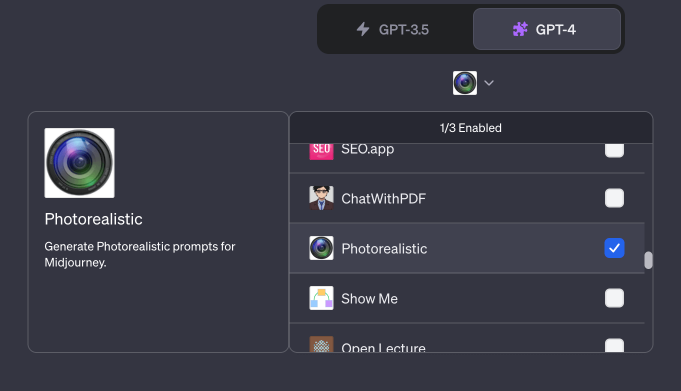
Part 3: How Do ChatGPT Image Generators Work?
It is wise to understand its work to make the most out of the ChatGPT image generator. ChatGPT works on a natural language processing model that uses the RLHF approach to get trained on bulks of human language datasets.
Some say that ChatGPT understands and responds to a certain text, similar to a human's response.
All you have to do is prompt ChatGPT about your requirements for the image by using the right prompts, and it'll offer a reasonable solution to the best of its knowledge that it has been trained on.
Part 4: ChatGPT Image Generator Alternatives
Most high-end graphic designers aren't satisfied with the quality and accuracy of images provided by ChatGPT and need a better alternative.
In this case, many tools are based on ease of use, budget, and reliability. Some of them are listed as follows:
1DALL-E 2 by OpenAI
When it comes to software similar to ChatGPT, there's nothing better than its sister software, i.e., DALL-E 2 by OpenAI. It is a Windows-based image generator widely reputed for its functionalities for producing high-quality graphics with a vast array of text-based descriptions.
Key Features
- One word can deliver a wide range of different images.
- Different types of image categories.
- Adjusting images and blending ideas using prompts.
- Creates photorealistic 512x512 standard image.
Price:
Free: Trial for 50 prompts
Lowest 256x256: $0.016/image
Moderate: 512x512: $0.018/image
High 1024x1024: $0.020 / image
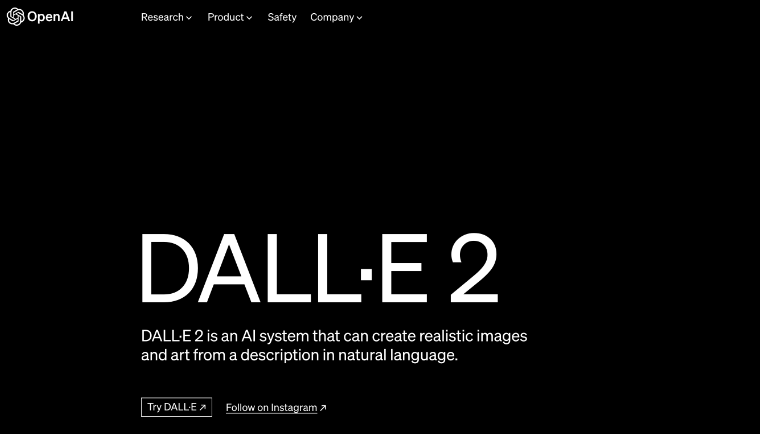
Source: openai.com
2Dream by WOMBO
Dream by Wombo offers a complete set of features, even in the free version, without any restrictions. It is famous for its user-friendly interface, color picker, and expansive range of styles. People interested in NFTs use this AI image generator best because of its organizational functionalities.
Key Features
- Best for beginners.
- Unlimited images in the premium version.
- Complete ownership of generated images.
- Different image styles.
- NFT recreation to improve creative skills.
- High-quality images.
Price:
Free: 3 images/day
Premium: $9.99/month

Source: dream.ai
3Midjourney
Midjourney gained popularity by producing imaginative pictures early in AI image generation. You can only use this AI image generator through a Discord account, as the API isn't released publicly.
Not only can it create images using texts, but with the "Midjourney Describe" feature, designed for visually impaired people, the user can get a complete description of the imported image.
Key Features
- Top-tier text-to-image generator.
- Versatility in textual instructions.
- Exhibition spaces dedicated to public and private communities.
- Creates celebrity portraits.
Price:
Basic: $10/month
Standard: $30/month
Pro: $60/month
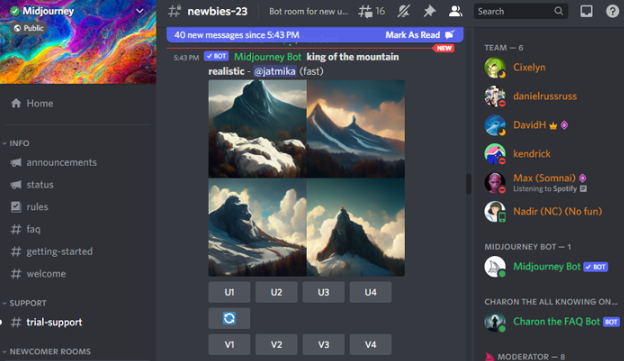
Source: midjourney.com
Part 5: ChatGPT vs. Human Generated Images: What are Differences?
Considering how ChatGPT has meddled in all our lives, especially when it comes to content generation, people often fail to differentiate between human-generated and AI-generated data anymore.
With the advancement of machine learning algorithms, it would be more difficult to identify AI-based images from human images.
Following are some of the ways to distinguish between ChatGPT and human-generated images:
Repetition
The images generated with ChatGPT aren't always unique; they have a hint of repetition. Despite their vast dataset, it's still finite compared to the human brain. It tends to have a repeated pattern and can give a similar look to a previously created human art piece.
Creativity
Without a doubt, humans have more creative instincts than AI, which can be perceived in images. Most images from ChatGPT don't have originality, and if you prompt weird ideation to the software, it might not be able to generate results as per your style.
Personalization
With creativity comes personalization. Since humans consider factors like targeted audience, concepts, color scheme, etc., when generating any image, they customize the image persona to meet the user's needs. However, with ChatGPT, it would be much more difficult to accomplish since the results are more generic.
Errors
Although ChatGPT and human-generated images have room for error, the nature of the error would differ.
Human-generated images may have contrasting problems or drawing issues in general, but ChatGPT can generate human images with more than 2 hands or more than 10 fingers, suggesting it may be created using AI.
Authenticity
Human-produced content is often seen as more authentic and genuine, as it reflects the unique perspective and voice of the creator. This can be especially important for building trust and credibility with customers.
Sentiment
While ChatGPT may fail to replicate human emotions realistically, humans who obviously have experienced emotions themselves are more likely to represent the complexities in a better manner.
Adaptability
Taking the ChatGPT 3.5 model as an example which only has information before 2021, AI-generated images can be outdated. Whereas human-produced images are more updated and adapted to the current circumstances. Moreover, as the requirements are perceived with like-minds, the need for revisions is reduced.
Legal Considerations
Compared to images generated using ChatGPT, humans wouldn't have a problem with copyright or plagiarism unless they have stolen the concept. Human-produced images have more reliability to avoid such concerns.
Conclusion
With the transitions in the technological world, the only person successful is the one who adapts to the changes. When it comes to image generation, ChatGPT lacks in a few aspects. However, with people making the best use of every software, it can go beyond its functionalities, assisting as a ChatGPT image generator.
If details and accuracy aren't your requirements, then using methods for creating images using ChatGPT can get you moving.
However, for high-quality, relevant, and detailed pictures, you can always jump to ChatGPT alternatives allowing users to create realistic and beautiful images within some seconds using text-based descriptions.




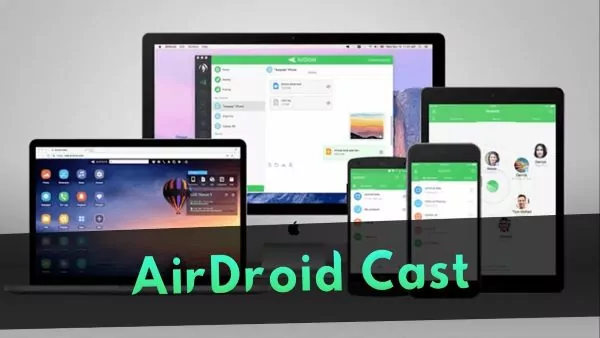
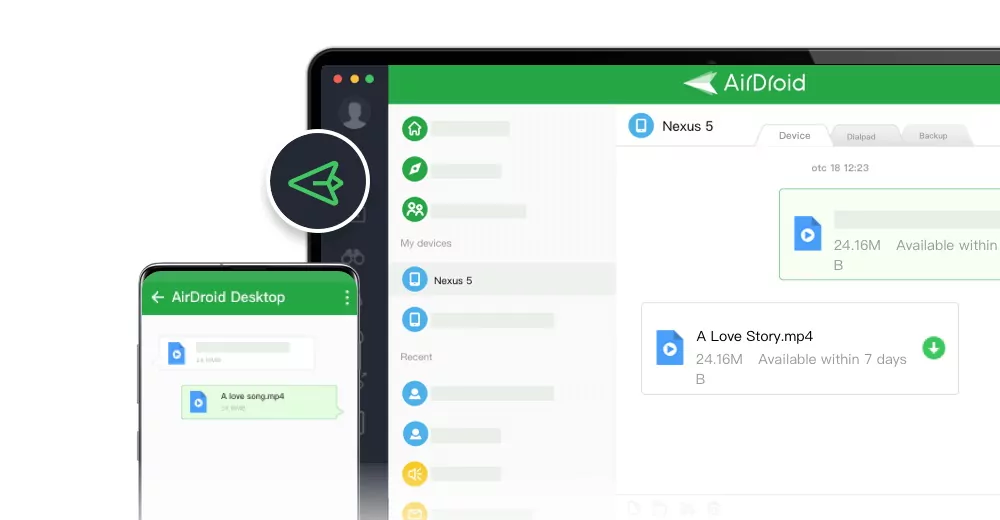



Leave a Reply.